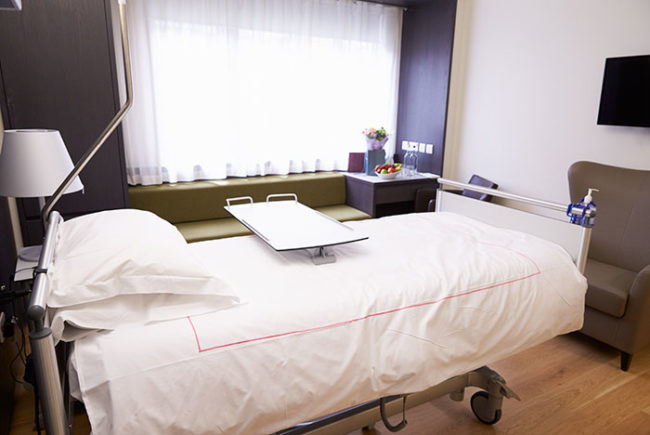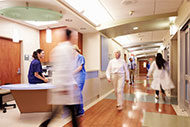Just as clinicians track patients’ vital signs, facilities managers at progressive hospitals monitor essential data from sophisticated sensors placed within systems and equipment that keep health facilities operating efficiently. Think of it as population health management for real estate and facilities.
A new report from real estate services firm JLL, Chicago, identifies five ways hospitals can apply advanced data analytics to improve operational performance of buildings, property and equipment. Despite the opportunity, many hospitals still don’t utilize data to monitor facility performance, according to the report.
While hospitals routinely use data to identify and track high-risk and at-risk patients, few have a technology platform to help them manage the part of their business that represents 40 percent or more of the assets on their balance sheets, says Pete Bulgarelli, executive managing director, JLL Corporate Solutions.
“If hospitals applied a population health management model to their real estate and facilities, they would reduce the risk associated with aging equipment and infrastructure and keep them performing at a high level, avoiding inefficiencies and potential issues later,” Bulgarelli says.
The JLL report identifies the areas influenced by facilities management that are ideal for applying a population health mindset:
-
Patient safety and satisfaction. Technology platforms can track routine maintenance work orders through a mobile device, allowing for requests to be made easily and then prioritized, assigned, executed and tracked.
Analyzing the data also can uncover recurring problems with processes or equipment, creating opportunities for sustainable performance improvement and ultimately leading to a more efficient and safe environment for patients and families.
-
Life safety. Progressive hospitals and health systems have begun using an automated approach to regulatory compliance, using data to understand how to use resources more effectively. For example, analytics show the percentage of failed life safety elements to better understand the condition of buildings and how they’re maintained.
Automating and proactively addressing life safety code and environment of care regulations and standards not only improves compliance, it also enhances patient, staff and visitor safety, and ensures that facilities are ready for regulatory review.
-
Environmental equipment. Rather than doing manual spot checks to see how well equipment is operating, sophisticated sensors can continuously track performance and transmit data in real time. Sensors also can generate data that allow users to anticipate when equipment might fail and take action to mitigate the risk of failure.
-
Medical equipment. The use of radio-frequency identification (RFID) tags helps to maintain an accurate inventory of medical equipment and its location, helping to avoid
To take it even farther, smart medical equipment that can talk directly to other equipment via the Internet of Things, can transmit real-time location and performance data to the technology platform.
-
Space utilization. With a few computer keystrokes, a facilities manager can pull up a color-coded floor map and select a filter to view space by applying specific variables. The result is information that paves the way for making objective, informed decisions on the most effective and efficient use of space.
“Using technology solutions to make data-driven real estate decisions is as much about patients as it is about physical assets and cost savings,” says Bulgarelli. “Hospitals’ needs are evolving rapidly.”





